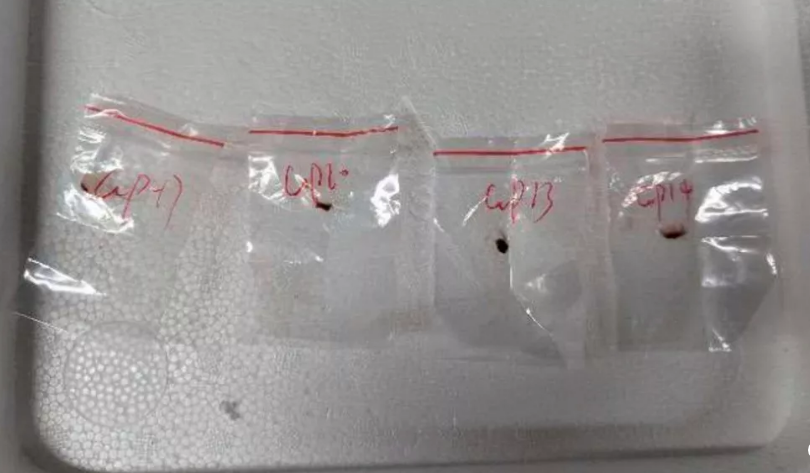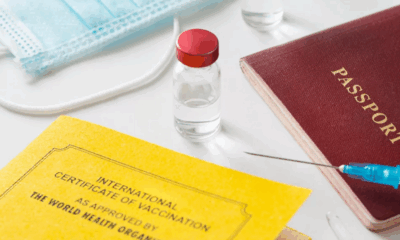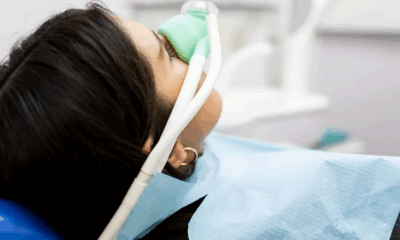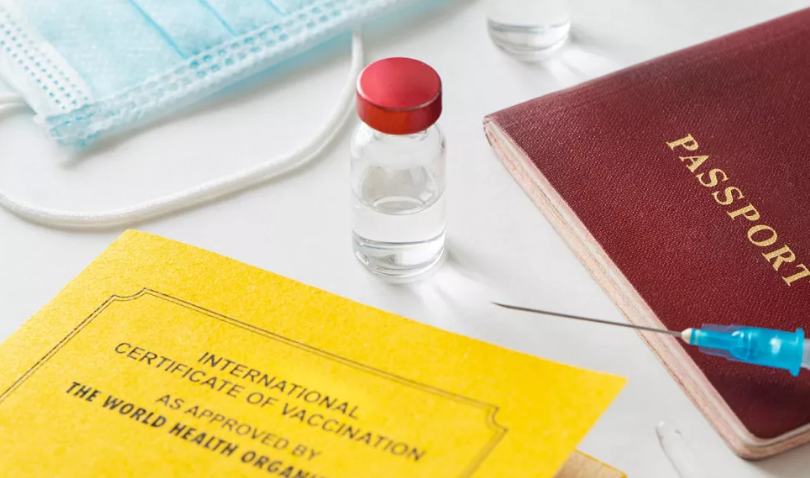Health
U.S. Foreign Aid Freeze Sparks HIV Crisis as Millions Risk Losing Treatment
The global fight against HIV/AIDS is at risk as confusion over U.S. foreign aid policy threatens access to life-saving medication for millions. A temporary waiver for the President’s Emergency Plan for AIDS Relief (PEPFAR)—a program credited with saving countless lives—has left uncertainty in its wake, raising concerns about a resurgence in AIDS-related deaths.
According to the United Nations AIDS agency, the disruption could lead to 6.3 million AIDS-related deaths over the next five years. The crisis unfolds at a time when complacency around HIV is rising, with declining condom use among young people and the emergence of preventive drugs that some believe could end AIDS for good.
The Importance of PEPFAR
Launched in 2003, PEPFAR is widely considered one of the most successful foreign aid programs in history, providing antiretroviral drugs to millions of people worldwide. However, the Trump administration’s decision to freeze foreign aid, citing concerns over wasteful spending, has thrown the program into chaos.
Hundreds of U.S.-funded health workers in Africa—including in Kenya and Ethiopia—have already been laid off, causing significant disruptions to HIV testing, care, and support. Some clinics have reportedly turned patients away, leaving them without critical medication.
The U.S. Centers for Disease Control and Prevention (CDC) stresses that without HIV treatment, people with AIDS typically survive only three years. The fear now is that delays in resolving PEPFAR’s funding status could undo decades of progress in combating the epidemic.
What Happens When HIV Treatment Stops?
HIV, which is transmitted through blood, breast milk, or semen, weakens the immune system, making individuals vulnerable to life-threatening infections. The 1980s AIDS epidemic first alerted the world to this phenomenon when rare diseases began appearing in otherwise healthy people.
Today, antiretroviral drugs keep HIV from multiplying in the body. Stopping treatment allows the virus to rebound within weeks, raising the risk of transmission and potentially leading to drug-resistant strains.
For pregnant women, continued treatment is critical to preventing mother-to-child transmission. Without medication, babies born to HIV-positive mothers face a high risk of infection, which can lead to severe complications and early mortality.
Without treatment, people living with HIV become susceptible to opportunistic infections such as pneumonia, tuberculosis (TB), and salmonella—diseases that can be deadly when the immune system is compromised. In countries like South Africa, which has the highest number of HIV cases and a severe TB crisis, the effects of treatment disruptions could be catastrophic.
The Urgency of Action
For years, people living with HIV have been advised to take their medication at the same time every day to prevent viral resistance. Now, that routine is in jeopardy as supply chains break down.
Health experts warn that the longer PEPFAR’s future remains uncertain, the more people will be left without life-saving drugs. Restoring lost funding, rehiring laid-off workers, and rebuilding essential health programs will take time—time that millions of people may not have.
As the international community looks to the U.S. for clarity, the fate of millions of HIV patients hangs in the balance.
Health
Europe Faces Growing Challenges in Meeting Medical Care Needs, EU Report Shows

A new report has highlighted stark disparities in healthcare access across Europe, revealing that a growing number of citizens face unmet medical needs due to systemic issues such as high costs and long waiting times.
According to the latest data from Eurostat and the Health at a Glance: Europe 2024 report, 3.8 per cent of EU residents aged 16 and over reported unmet medical needs in the past year. However, the percentage climbs significantly when focusing solely on individuals who actively required healthcare services — with some countries reporting unmet needs among over 20 per cent of this group.
The causes are twofold: healthcare system barriers, including long waiting lists and treatment costs, account for 2.4 per cent of all cases, while 1.4 per cent stem from personal reasons such as fear of doctors, lack of time, or lack of knowledge about available care.
Unmet healthcare needs vary widely across the continent. Estonia tops the list within the EU, with 15.5 per cent of people reporting unmet needs, followed closely by Greece and Albania, each over 13 per cent. Even wealthier Nordic countries show surprising figures — Denmark (12.2 per cent), Finland, and Norway (over 7.5 per cent) — despite high healthcare spending. Conversely, countries such as Germany (0.5 per cent), Austria (1.3 per cent), and the Netherlands (1.4 per cent) report the lowest levels, pointing to more efficient and accessible healthcare systems.
Cost is a dominant barrier in nations like Greece and Albania, where over 9 per cent of citizens cited unaffordable care. In contrast, long waiting times are the primary issue in countries like Estonia (12 per cent) and Finland (7.5 per cent).
Income inequality also plays a major role. On average, 3.8 per cent of low-income individuals across the EU report unmet needs due to healthcare system issues — more than triple the 1.2 per cent reported by higher-income groups. In Greece, that gap is particularly wide, with 23 per cent of low-income respondents affected.
Healthcare experts say these disparities reflect more than just economic factors. Dr. Tit Albreht, President of the European Public Health Association (EUPHA), noted, “Unmet health needs arise from different reasons, including how well healthcare governance integrates services to meet population needs.”
Industry leaders, such as Tina Taube of the European Federation of Pharmaceutical Industries and Associations (EFPIA), stressed the importance of timely access to diagnosis and treatment. “Unmet needs are context-specific,” she said. “It’s not just about product availability, but also healthcare system readiness.”
Andy Powrie-Smith of EFPIA added that patients in some European countries wait up to seven times longer than others for the same treatments due to regulatory delays and varying national infrastructures.
The findings underscore the need for a more coordinated, equitable healthcare strategy across the continent, especially as Europe faces the challenges of an ageing population and increasingly complex medical technologies.
Health
Chinese Nationals Charged in U.S. with Smuggling Toxic Fungus Labeled a Potential Agroterrorism Threat

U.S. federal authorities have charged two Chinese nationals in connection with smuggling a dangerous agricultural fungus into the country, a move investigators describe as posing significant national security risks.
Yunqing Jian, 33, and Zunyong Liu, 34, are accused of conspiracy, smuggling, making false statements, and visa fraud after allegedly attempting to bring Fusarium graminearum — a toxic fungus capable of devastating crops and harming humans and livestock — into the United States. The case was detailed in a court filing by the Federal Bureau of Investigation (FBI) in Detroit.
The fungus, which targets essential food staples like wheat, maize, barley, and rice, is described in a scientific journal cited by the FBI as a “potential agroterrorism weapon.” Experts warn that its spread could inflict serious damage on global food security and agricultural economies.
U.S. Attorney Jerome Gorgon Jr. emphasized the seriousness of the case, stating: “The alleged actions of these Chinese nationals, including a loyal member of the Chinese Communist Party, are of the gravest national security concerns.”
Jian made her first appearance in a Detroit federal court on Tuesday and remains in custody awaiting a bond hearing scheduled for Thursday. A court-appointed attorney for her initial appearance declined to comment.
According to the FBI’s complaint, the investigation began in July 2024 when Liu was stopped at Detroit Metropolitan Airport. During a routine screening, customs officials discovered suspicious red plant material in his backpack. Liu initially claimed not to know what it was but later admitted he planned to use it for research purposes at the University of Michigan, where Jian is currently employed and where Liu previously worked.
Authorities say Liu’s mobile phone contained an article titled “Plant-Pathogen Warfare under Changing Climate Conditions,” raising further concerns about the intended use of the samples. The FBI believes the two individuals were coordinating to introduce the pathogen into a U.S. research setting without proper clearance or oversight.
Liu was denied entry to the U.S. and deported in July. Charges against both individuals were filed this week, as prosecutors continue to investigate the scope of the alleged conspiracy.
The case underscores growing concerns in the U.S. over biosecurity and potential misuse of scientific research amid rising geopolitical tensions.
Health
US Expands Measles Vaccination Guidance Amid Global Surge in Cases
-

 Business1 year ago
Business1 year agoSaudi Arabia’s Model for Sustainable Aviation Practices
-

 Business1 year ago
Business1 year agoRecent Developments in Small Business Taxes
-

 Politics1 year ago
Politics1 year agoWho was Ebrahim Raisi and his status in Iranian Politics?
-

 Business11 months ago
Business11 months agoCarrectly: Revolutionizing Car Care in Chicago
-

 Business11 months ago
Business11 months agoSaudi Arabia: Foreign Direct Investment Rises by 5.6% in Q1
-

 Technology1 year ago
Technology1 year agoComparing Apple Vision Pro and Meta Quest 3
-

 Politics1 year ago
Politics1 year agoIndonesia and Malaysia Call for Israel’s Compliance with ICJ Ruling on Gaza Offensive
-

 Sports10 months ago
Sports10 months agoKeely Hodgkinson Wins Britain’s First Athletics Gold at Paris Olympics in 800m


























